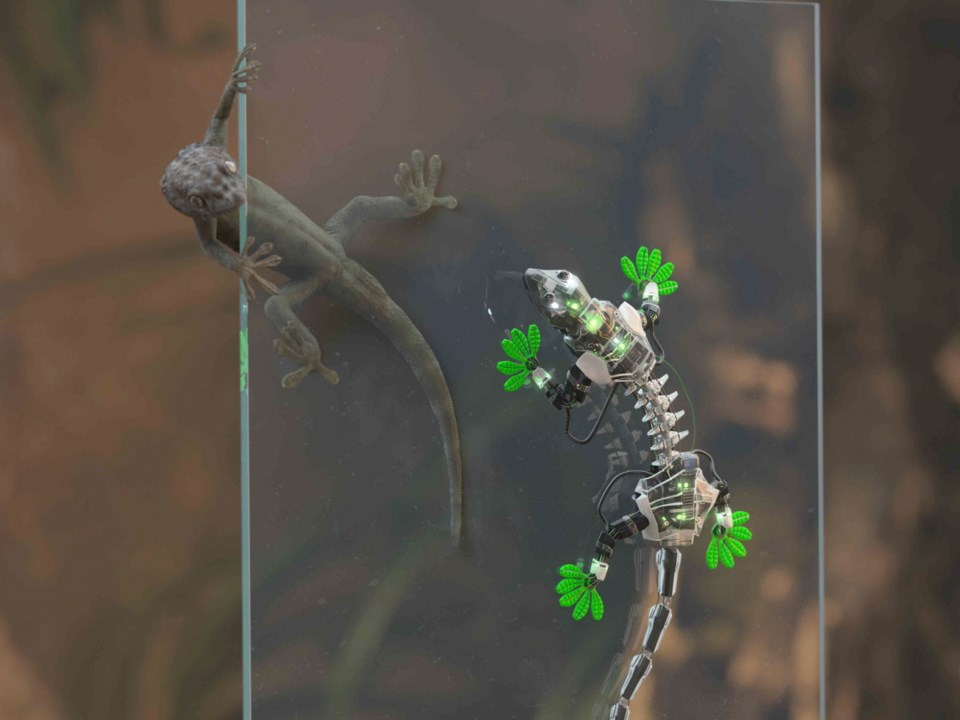What: Mysteries of the Unseen World
Where: Imax Victoria, Royal B.C. Museum
When: Opens Friday. Sunday to Thursday, 6 p.m.; Friday to Saturday, 7 p.m., in 3-D; 2-D version: 11 a.m. and 3 p.m. daily
Tickets, info: 250-480-4887, imaxvictoria.com
Rating: five stars (out of five)
Now, that was cool. This is the kind of reaction sure to be elicited — especially from younger viewers — after showings of Mysteries of the Unseen World, an eye-opening giant-screen dazzler like few others we’ve seen at Imax Victoria.
Time appears to pass at lightning speed during director Louis Schwartzberg’s 40-minute visual feast that innovatively focuses on things that are too small, slow or fast for the naked eye to detect.
If you’ve ever considered trying to sneak a prohibited object into your airline luggage, you’ll surely stop after seeing sequences replicating what it’s like to have X-ray and infrared vision.
After seeing some of this film’s up-close-and-personal encounters, chances are you’ll also be tempted to scrub yourself and clean your house more thoroughly, get your pets treated for fleas, book hotels without bedbug problems, apply insect repellent after learning how a mosquito can “see” your body’s bite-worthy parts, and treat spiders and bumble bees with more respect.
Showcasing his considerable skills as a time-lapse photographer, Schwartz-berg and his collaborators also work wonders with macro photography and high-speed camerawork to put the film’s title universe into fascinating perspective. A bonus is that this film’s 3-D effects are refreshingly justifiable and used effectively, as when a massive owl spreads its talons and takes flight, right into your face.
Other startling highlights include close-ups of a Jesus lizard running on water; a rattlesnake, poised to strike, opening its mouth; and amazing shots of lightning rising from the ground and descending from the sky.
It’s all part of the significant wow factor that makes Mysteries of the Unseen World, narrated with a blend of earnestness and playfulness by Forest Whitaker, an accessible diversion for viewers of all ages.
Split into four segments, Schwartzberg’s light-hearted film arouses memories of The Fantastic Voyage, the 1966 sci-fi classic featuring miniaturized characters on a medical journey through a scientist’s body.
In this Imax film, we witness wonders such as the mind-boggling world of “invisible light” (micro-waves, radio waves and gamma rays) — illustrated, for instance, with shots of a bee seeking pollen using ultraviolet light.
The time-lapse imagery that so dramatically captures mundane events that occur too slowly for us to perceive is particularly impressive, as it reflects an astronaut’s view of the planet itself in motion.
The film acknowledges Harold Edgerton, the Massachusetts Institute of Technology electrical engineering professor, whose high-speed techniques provide fascinating insight into what happens when a raindrop hits a puddle (it bounces), or how a dragonfly manipulates its wings. Seeing popcorn pop at more than 100 times the standard 24-frames-per-second speed of film is another highlight.
The film’s final section, which explores the so-called “nano world,” in which objects are so tiny you’d need an electron microscope to see them, is particularly mindblowing.
While Schwartzberg relies more on computer graphics than photography for molecular-level sequences featuring carbon atoms, down to a virus’s DNA in one sequence, it’s no less jaw-dropping.
Squeamish filmgoers should note that this eye-filling entry also has a sizable “Ewww” factor, even if the filmmakers take a playful approach. “These things crawl across your face as you sleep,” Whitaker declares over enlarged images of mites.
At times, the film enters too-much-information territory as it moves from arachnids to fleas and other tiny parasites, skin flakes, head lice and other creatures at work on our bodies.
As these tiny critters that thrive on our bodies strut their stuff, Whitaker deadpans at one point: “This is what causes stinky feet.”
More palatable are close-ups of a butterfly wing’s minute strictures, a tiny piece of gold being injected into the bloodstream to fight cancer, or images illustrating how a lotus leaf’s water-repellent surface could potentially inspire inventions to some day prevent airplane wings from icing up.


-thumb.png;w=120;h=80;mode=crop)
